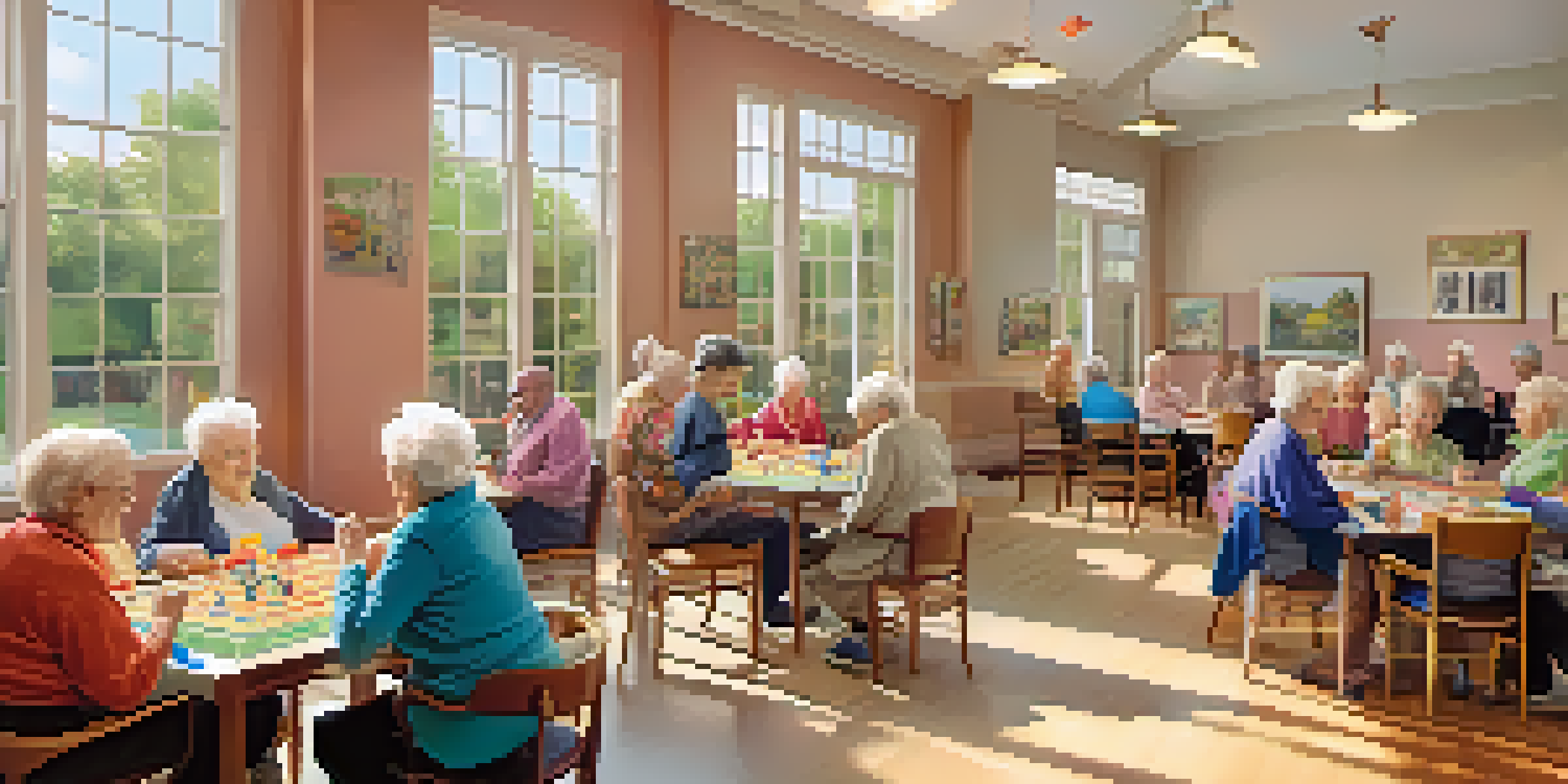Understanding California's Aging Population: Key Statistics

Overview of California's Aging Demographics
California is home to one of the largest aging populations in the United States. As of recent estimates, nearly 15% of Californians are aged 65 and older, a figure that is expected to grow significantly in the coming years. This demographic shift is not just a number; it represents a vibrant community with diverse needs and contributions.
The old believe everything; the middle-aged suspect everything; the young know everything.
The state's aging population is influenced by various factors, including longer life expectancy and the influx of retirees seeking a warmer climate. Cities like Los Angeles and San Diego have seen a notable increase in older residents, enhancing the cultural and social fabric of these areas. Understanding this demographic is essential for addressing health care, housing, and social services.
Moreover, California's aging population is increasingly diverse, with a significant representation of ethnic minorities. This diversity enriches the community, but it also presents unique challenges that require tailored solutions in policy and service delivery.
Impact of Aging on California's Workforce
The aging population is reshaping California's workforce in various ways. As more individuals retire, there is a growing need for younger workers to fill those gaps. However, this transition can create challenges as industries must adapt to a changing labor market while ensuring knowledge transfer from older employees.

Furthermore, older workers are increasingly choosing to remain in the workforce longer, driven by financial necessity or a desire to stay active. This trend can be beneficial, as experienced workers bring invaluable skills and mentorship to younger employees. However, it also raises questions about workplace policies and support systems for older adults.
California's Aging Population Growth
Nearly 15% of Californians are aged 65 and older, a figure expected to rise significantly, highlighting diverse needs in healthcare and social services.
Employers are beginning to recognize the importance of age-inclusive practices, such as flexible work hours and retraining programs. By valuing the contributions of older workers, companies can foster a more dynamic and diverse workplace that benefits everyone.
Healthcare Needs of California's Seniors
As California's population ages, healthcare needs are becoming increasingly complex. Older adults often face chronic health conditions that require ongoing care, such as heart disease, diabetes, and arthritis. This reality places a strain on the healthcare system, which must evolve to meet these growing demands.
Aging is not lost youth but a new stage of opportunity and strength.
Accessibility to healthcare services is another critical issue. Many older Californians experience difficulties accessing care due to transportation challenges or the lack of nearby facilities. Efforts are being made to improve telehealth services and mobile clinics to ensure that seniors receive the care they need, regardless of their location.
Additionally, mental health is an essential aspect of overall well-being for seniors. Many older adults may experience feelings of loneliness or depression, particularly if they have lost loved ones or faced significant life changes. Addressing mental health needs is crucial and requires comprehensive support systems that include counseling and community engagement.
Housing Trends Among California's Elderly
Housing is a major concern for California's aging population, as many seniors seek affordable and accessible living options. The high cost of housing in the state often forces older adults to make tough decisions, such as downsizing or relocating to areas with lower living costs. This trend can disrupt established communities and social networks.
Moreover, there is a growing demand for senior housing that accommodates the unique needs of older adults. Options such as assisted living facilities and age-restricted communities are becoming more popular, offering both independence and support. These living arrangements must be designed to foster social connections and enhance the quality of life for residents.
Workforce Changes Due to Aging
The retirement of older workers creates gaps in the workforce, necessitating younger replacements while simultaneously encouraging older employees to remain active.
Innovative solutions, such as co-housing and intergenerational living, are also gaining traction. These alternatives not only provide affordable housing but also promote community and interaction among different age groups, creating vibrant living environments.
The Role of Technology in Supporting Seniors
Technology is playing an increasingly vital role in enhancing the lives of California's aging population. From health monitoring devices to online social platforms, technology can help seniors maintain independence and stay connected. These tools can empower older adults to manage their health and communicate with loved ones more easily.
However, not all seniors are tech-savvy, which can lead to disparities in access to these resources. Bridging the digital divide is essential, and initiatives aimed at providing training and support can help older adults embrace technology. Libraries and community centers often offer classes to assist seniors in navigating the digital landscape.
Moreover, smart home technology can significantly improve safety and comfort for seniors living independently. Features such as fall detection systems and voice-activated assistants can offer peace of mind for both seniors and their families, allowing for greater autonomy while ensuring help is available when needed.
Social Engagement and Community Involvement
Social engagement is crucial for the well-being of California's aging population. Many seniors thrive when they have opportunities to connect with others, participate in community activities, and contribute their skills. Programs that encourage older adults to volunteer or join local clubs can combat feelings of isolation and foster a sense of belonging.
Communities across California are recognizing the importance of creating age-friendly environments. This includes organizing events and activities that cater to seniors, ensuring public spaces are accessible, and enhancing transportation options. By prioritizing social engagement, communities can enrich the lives of older residents and promote intergenerational connections.
Housing Challenges for Seniors
Many older adults in California face tough housing decisions due to high costs, leading to a demand for affordable and accessible living options.
Additionally, local organizations and nonprofits play a vital role in facilitating social programs for seniors. These initiatives not only provide valuable resources but also help build a strong support network among older adults, enabling them to share experiences and strengthen community ties.
Policy Implications of an Aging Population
The aging population in California presents significant policy challenges that require thoughtful consideration. Policymakers must address the increasing demand for healthcare, housing, and social services tailored to seniors. This necessitates a comprehensive approach that includes funding, research, and collaboration among various stakeholders.
Moreover, ageism remains a barrier to fully understanding and addressing the needs of older adults. Policies should promote inclusion and respect for seniors, recognizing their contributions to society. Advocacy for age-friendly legislation can help ensure that the voices of older Californians are heard in the decision-making process.

As California continues to navigate its demographic changes, fostering a culture of respect and support for the aging population will be essential. By prioritizing the needs of seniors, the state can create a more inclusive and sustainable future for all residents.